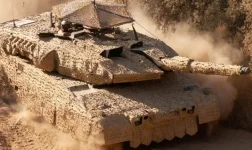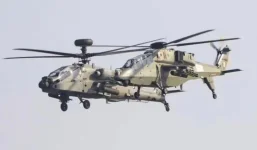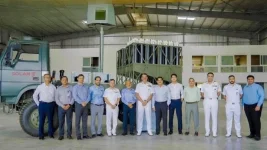- Views: 3K
- Replies: 8
India's Ministry of Defence has taken a significant step towards strengthening the nation's air defence capabilities while boosting domestic manufacturing. A formal request, known as a Request for Proposal (RFP), has been issued to acquire an initial set of the new generation Very Short Range Air Defence System (VSHORADS-NG).
This initial purchase includes 48 launchers, 48 night vision sights, 85 missiles, and one testing station for the missiles.
The procurement falls under the "Buy (Indian)" category, highlighting the government's commitment to the 'Atmanirbhar Bharat' or self-reliant India initiative.
This category mandates that the equipment must have at least 50% content sourced from within India, prioritising systems designed, developed, and manufactured domestically.
Advanced Indigenous Technology
The VSHORADS-NG is a state-of-the-art, fourth-generation Man-Portable Air Defence System (MANPADS) – essentially a shoulder-launched or tripod-mounted missile system designed for easy transport and operation by soldiers.Developed by India's Defence Research and Development Organisation (DRDO) in partnership with Indian companies like Adani Defence & Aerospace and ICOMM Tele Limited, this system is an advancement over the VSHORADS successfully tested between 2022 and 2024.
Designed to counter threats like drones, helicopters, and low-flying enemy aircraft, the VSHORADS-NG uses advanced infrared homing technology to track targets.
It features miniaturised control systems and integrated electronics, allowing it to engage targets from 250 meters up to 6 kilometers away, travelling at speeds of Mach 1.5 (1.5 times the speed of sound). Its portability makes it suitable for deployment in various challenging environments, including high-altitude border areas and coastal zones.
Successful Trials Pave Way for Procurement
This procurement process follows successful developmental trials of the VSHORADS system conducted by the DRDO on October 5, 2024, at the Pokhran range in Rajasthan.During these tests, the system effectively intercepted high-speed targets flying at low altitudes, including drones designed to have minimal heat signatures. Defence Minister Rajnath Singh commended the successful trials, noting their importance in reinforcing India's air defence network.
While this initial order is modest, it is seen as the first step towards a much larger acquisition. The Indian Army ultimately requires around 500 launchers and 3,000 missiles to replace its outdated Russian Igla-1M systems and bolster its air defence resources.
Addressing Urgent Defence Needs
The push to modernise the Army's very short-range air defence inventory has become more urgent due to the changing nature of warfare. Recent global conflicts, such as the one in Ukraine, have highlighted the critical role of MANPADS in defending against drone swarms and low-flying aircraft.The Indian Army currently relies on older Igla-1M systems (around 450 refurbished missiles) and a limited number of newer Igla-S systems acquired through emergency procurements in 2020 and 2023. These emergency purchases, like a ₹260 crore deal for Igla-S units finalised in 2023 (with deliveries ongoing through 2024), were considered temporary solutions.
The VSHORADS-NG is intended to provide a long-term, self-reliant answer to this capability gap, reducing dependence on foreign suppliers like Russia (Igla-S), Sweden (RBS 70 NG), and France (MBDA Mistral), whose systems were considered in previous tenders.
Built for Tough Conditions, Future Ready
The defence ministry's requirements specify that the VSHORADS-NG must perform reliably in extreme weather, from freezing -45°C to hot +45°C conditions, and operate effectively in rain, fog, and high-altitude areas up to 5,500 meters.The inclusion of night sights ensures the system can be used around the clock, while the dedicated test station will support maintenance and ensure the missiles are always ready.
Furthermore, the system is designed with future upgrades in mind, allowing it to adapt to new threats like stealthier drones.
The collaboration between DRDO and its industry partners under the Development cum Production Partner (DcPP) model is expected to facilitate smooth production. Industry estimates suggest potential future orders for the tri-services (Army, Navy, Air Force) could reach around ₹1,900 crore.
Overcoming Past Hurdles
This move towards an indigenous system comes after previous efforts to procure foreign VSHORAD systems faced significant challenges. A major tender initiated in 2010 for over 5,000 missiles and hundreds of launchers (valued at approximately ₹27,000 crore) ultimately failed.Although Russia's Igla-S was identified as the lowest bidder in 2018, the deal encountered procedural issues and was eventually stalled amidst a freeze on direct imports. Repeated difficulties in finalising smaller deals since 2020 further emphasised the need for a homegrown solution.
The DRDO's VSHORADS technology, initially developed for a tripod platform, is being adapted for shoulder-launch use.
Separately, related technologies might also be used in another VSHORAD project focused on laser-beam riding guidance, potentially involving Bharat Dynamics Limited (BDL) and Thales under the 'Make-2' procurement procedure (where companies fund their own prototype development).



